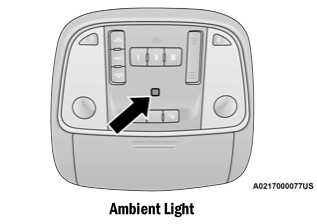Dodge Charger: VEHICLE MAINTENANCE / Brake System
In order to ensure brake system performance, all brake system components should be inspected periodically.
WARNING!
Riding the brakes can lead to brake failure and possibly a collision. Driving with your foot resting or riding on the brake pedal can result in abnormally high brake temperatures, excessive lining wear, and possible brake damage. You would not have your full braking capacity in an emergency.
Fluid Level Check — Brake Master Cylinder
Check the fluid level in the master cylinder immediately if the brake system warning light indicates system failure.
Check the fluid level in the master cylinder when performing underhood services.
Clean the top of the master cylinder area before removing the cap. Add fluid to bring the level up to the top of the “FULL” mark on the side of the master cylinder reservoir.
Overfilling of fluid is not recommended because it may cause leaking in the system.
Add enough fluid to bring the level up to the requirements described on the brake fluid reservoir. With disc brakes, fluid level can be expected to fall as the brake pads wear.
However, low fluid level may be caused by a leak and a checkup may be needed.
Use only brake fluid that has been recommended by the manufacturer, and has been kept in a tightly closed container to avoid contamination from foreign matter or moisture.
WARNING!
- Use only manufacturer's recommended brake fluid. Using the wrong type of brake fluid can severely damage your brake system and/or impair its perfor- mance. The proper type of brake fluid for your vehicle is also identified on the original factory installed hydraulic master cylinder reservoir.
- To avoid contamination from foreign matter or moisture, use only new brake fluid or fluid that has been in a tightly closed container. Keep the master cylinder reser- voir cap secured at all times. Brake fluid in a open container absorbs moisture from the air resulting in a lower boiling point. This may cause it to boil unexpectedly during hard or prolonged braking, resulting in sudden brake failure. This could result in a collision.
- Overfilling the brake fluid reservoir can result in spilling brake fluid on hot engine parts, causing the brake fluid to catch fire. Brake fluid can also damage painted and vinyl surfaces, care should be taken to avoid its contact with these surfaces.
- Do not allow petroleum based fluid to contaminate the brake fluid. Brake seal components could be damaged, causing partial or complete brake failure. This could result in a collision.
 Cooling System
Cooling System
WARNING!
You or others can be badly burned by hot engine coolant (antifreeze)
or steam from your radiator. If you see or hear steam coming from under the
hood, do not open the hood until the radiator has had time to cool...
 Automatic Transmission
Automatic Transmission
Special Additives
The manufacturer strongly recommends against using any special additives in the
transmission. Automatic Transmission Fluid (ATF) is an engineered product and its
performance may be impaired by supplemental additives...
Other information:
Dodge Charger 2011-2026 Owner's Manual: Glass Surfaces
All glass surfaces should be cleaned on a regular basis with Mopar® Glass Cleaner, or any commercial household-type glass cleaner. Never use an abrasive type cleaner. Use caution when cleaning the inside rear window equipped with electric defrosters or windows equipped with radio antennas...
Dodge Charger 2011-2026 Owner's Manual: AUTOMATIC TRANSMISSION
You must press and hold the brake pedal while shifting out of PARK. WARNING! Never use the PARK position as a substi- tute for the parking brake. Always apply the parking brake fully when exiting the vehicle to guard against vehicle movement and possible injury or damage...
Categories
- Manuals Home
- Dodge Charger Owners Manual
- Dodge Charger Service Manual
- To Disarm The System
- WHEEL AND TIRE TORQUE SPECIFICATIONS
- PARKING BRAKE
- New on site
- Most important about car
Ambient Light — If Equipped
The overhead console is equipped with an ambient light feature. This light illuminates for improved visibility of the floor and center console area.

